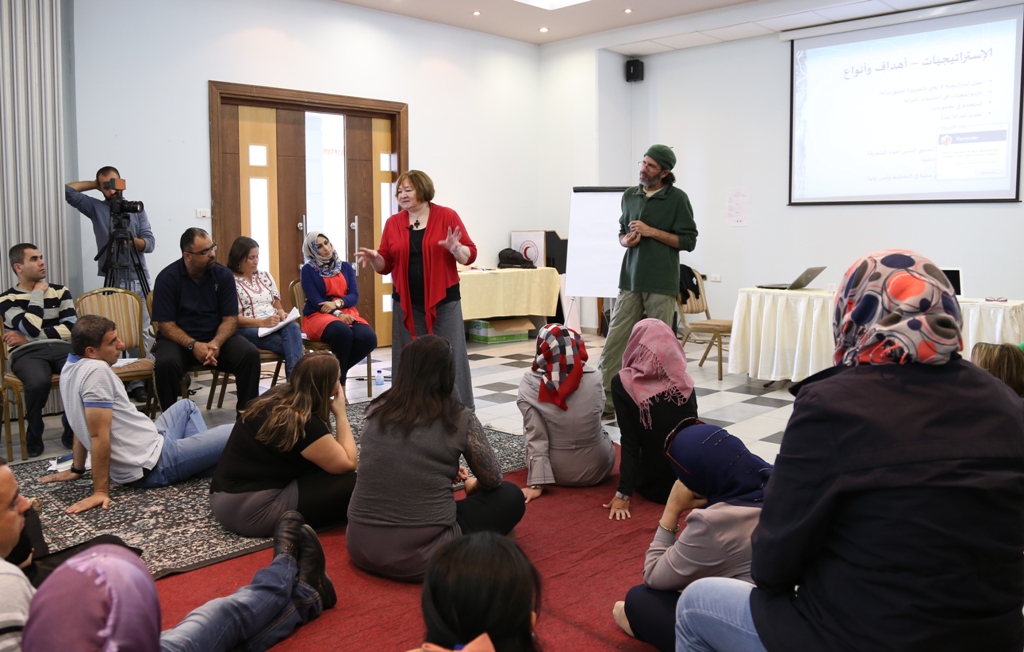“Educational drama” suggests all the conventional moving parts of theater―a script, actors who have practiced their roles, a director who has coached the actors, and an environment created concretely through costumes, scenery, and props. Process drama does not use any of these accustomed theater devices. In process drama, it’s all in its name—this creative instructional method provides teachers and students the experience of an event, a place, or a time period through improvisation rather than rehearsing and presenting a final performance.
Process is the purpose.
According to theater scholar and educator, Cecily O’Neill, process drama begins with “a task to be undertaken, a decision to be made, or a place to be explored.” The teacher and students make an imaginary world and work to address challenges or events through dramatic improvisation. So there is no written script. The “drama” is not presented on a traditional proscenium stage but “set” in a classroom, often extended over hours, days, or weeks, and engaging all students.
For example, fifth-grade teacher Brenda Rosler utilized process drama in her social studies curriculum, bringing the Boston Tea Party to life in her classroom. Students took on roles as the King of England, colonists, and British soldiers. No scripts were memorized; no scenery constructed; only a group of students and their teacher imagined what it was like to be in Boston in 1773, and how to deal with the dramatic events of taxation and rebellion.
Process versus improvisation.
Process drama varies from other dramatic frameworks such as “theater games,” specifically Viola Spolin’s improvisational acting system developed in the 1950s. Spolin converted theater education by engaging students in short-term, performance-based activities or games. But with process drama, the focus is not for the students to create a performance for others, but to make an experience for themselves by working through an issue or challenge, making important discoveries about themselves and others along the way. And yet, the development of traditional theater skills, such as listening, speaking, and cooperation, are in fact refined and significant in process drama.
Teacher in role.
Another important variation between process drama and traditional theater education is the teacher’s participation. Typically, theater education finds the teacher directing or coaching. However, in process drama, the teacher takes on a role related to the students and participates in the improvisation. It is common that the teacher’s role establishes the environment, shapes sequences and improvisation, models behavior, and generally supports students.
In addition, the teacher’s role often sends information, such as a reporter or messenger; or creates structure, like a judge or elected official; but the teacher usually cannot make the ultimate decisions. This is the job of the students. The teacher is also not instructing students on how to “act.” Rather, the teacher asks students to pretend and engage their imaginations. The teacher’s role is not permanent. The teacher can step outside the role for classroom management, clarification, or other routine tasks. Think of the teacher as a facilitator. One minute a teacher may be asking questions; the next, communicating the thoughts of a particular character.
Passing the mantle.
Part of process drama’s intent is for students to take on the “mantle of the expert.” Coined by educator Dorothy Heathcote, this term means that students become specialists in the topic being explored. As they engage with each other and experience the events of the process drama, the students develop a deeper understanding. For example, imagine a process drama of the Continental Congress. Students will take on the different historical characters and points of view about founding a new nation. Through their debates and discussions with each other, they will cultivate expertise about governance. The classroom teacher will be but one of many experts about the Continental Congress by the end of the drama.
A tool in the theater classroom.
Process drama allows the theater specialist to probe deeper into a dramatic world beyond the boundaries of a written script. In her book, Drama Worlds: A Framework for Process Drama, Cecily O’Neill speaks about the advantages of using process drama in a theater classroom. O’Neill suggests that process drama can open doors into dramatic literature and characterization and deepen collaborations between student actors.
A tool in the generalist classroom.
Process drama can play a powerful role in language arts and social studies curricula, and be a vital tool to the “non-arts teacher,” particularly when studying literature and cultures unfamiliar to students. Through improvised dramas, students experience issues personally, providing a deeper connection to the content. The march on Selma, the first Thanksgiving, and the California Gold Rush are but a few moments in history that students can experience through process drama. Teachers also find that writing can be facilitated as students describe the roles they are making and events they are experiencing through letters, newspaper articles, diaries, and stories. During this classroom opportunity, students gain a greater understanding of material as they recreate different historical periods, people, and issues.
Process drama is not about “acting” but about attitude, experience, and empathy. It is a multifaceted tool, but one that unlocks the classroom and offers teachers depth and breadth throughout the curriculum.
